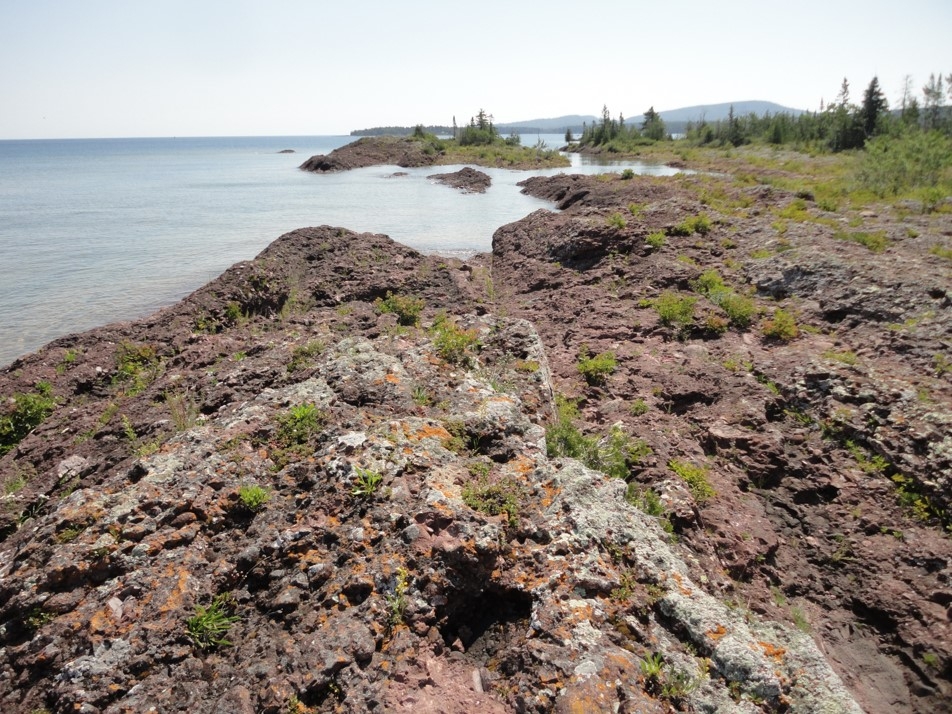Bedrock Lakeshore Group

Bedrock Lakeshores are sparsely vegetated communities with scattered herbs, graminoids, shrubs, and stunted trees growing on flat to gently sloping bedrock exposures along the Great Lakes shorelines of the Upper Peninsula and northern Lower Peninsula. Bedrock types that support Bedrock Lakeshore include limestone, sandstone, granite, and volcanics. Soil development and plant establishment are generally limited to cracks, joints, vesicles, and depressions in the bedrock, where small amounts of organic matter and finer sediments accumulate. Natural processes that influence species composition and community structure include wind and wave action, Great Lakes water level fluctuation, winter ice scour, and desiccation.
Four natural community types fall within the Bedrock Lakeshore group, including limestone bedrock lakeshore, sandstone bedrock lakeshore, granite bedrock lakeshore, and volcanic bedrock lakeshore. Classification of these Bedrock Lakeshore types is based primarily on differences in bedrock composition, although species composition and community structure also vary by substrate.
Citation
Cohen, J.G., M.A. Kost, B.S. Slaughter, D.A. Albert, J.M. Lincoln, A.P. Kortenhoven, C.M. Wilton, H.D. Enander, and K.M. Korroch. 2020. Michigan Natural Community Classification [web application]. Michigan Natural Features Inventory, Michigan State University Extension, Lansing, Michigan. Available https://mnfi.anr.msu.edu/communities/classification. (Accessed: December 14, 2025).

